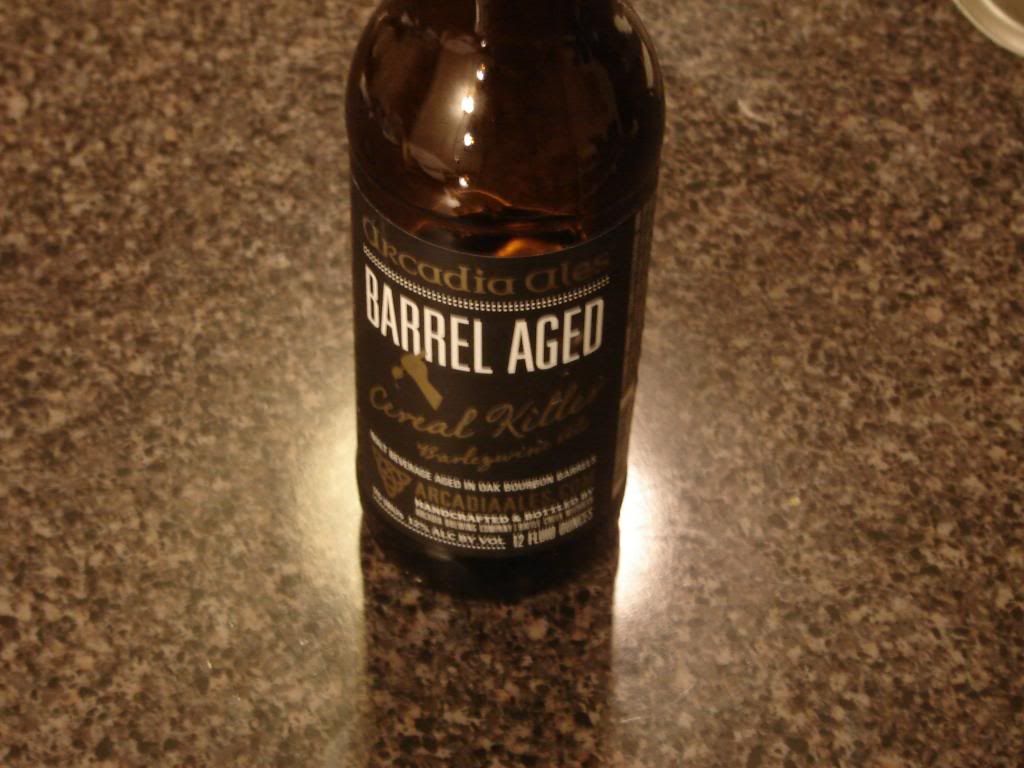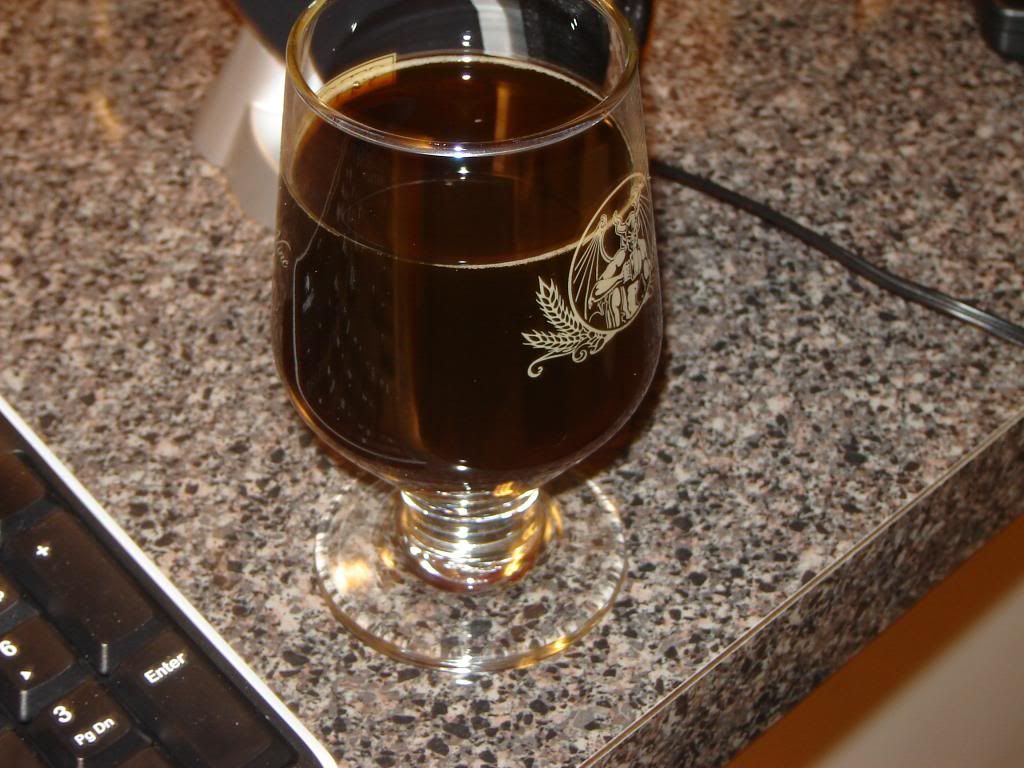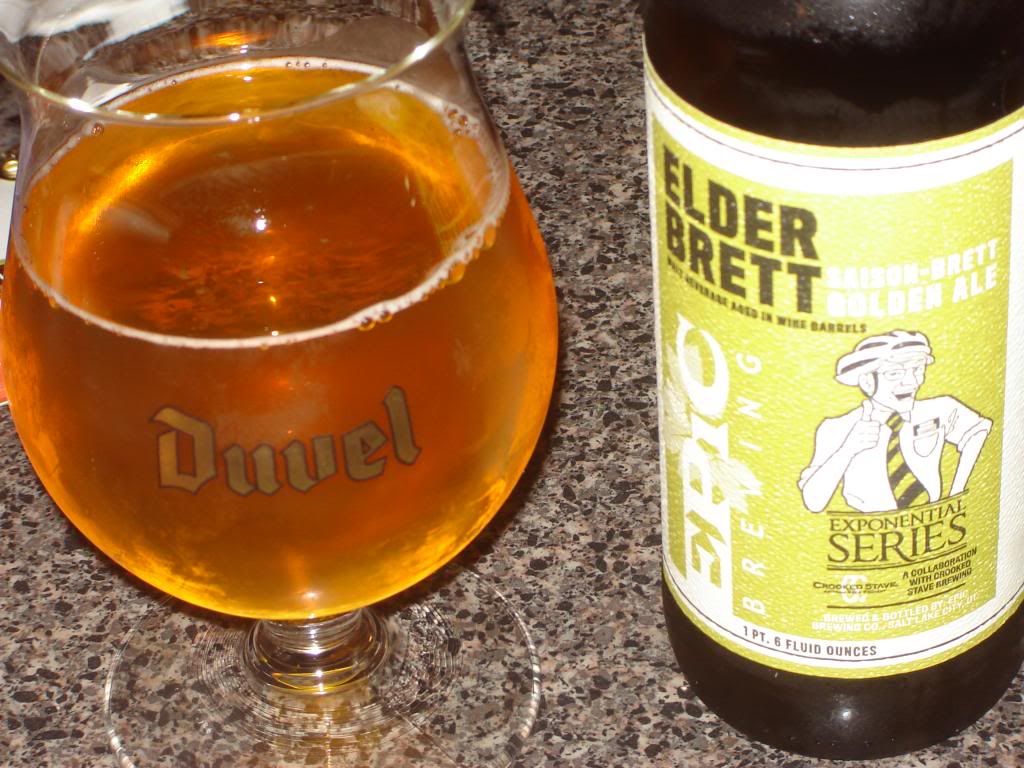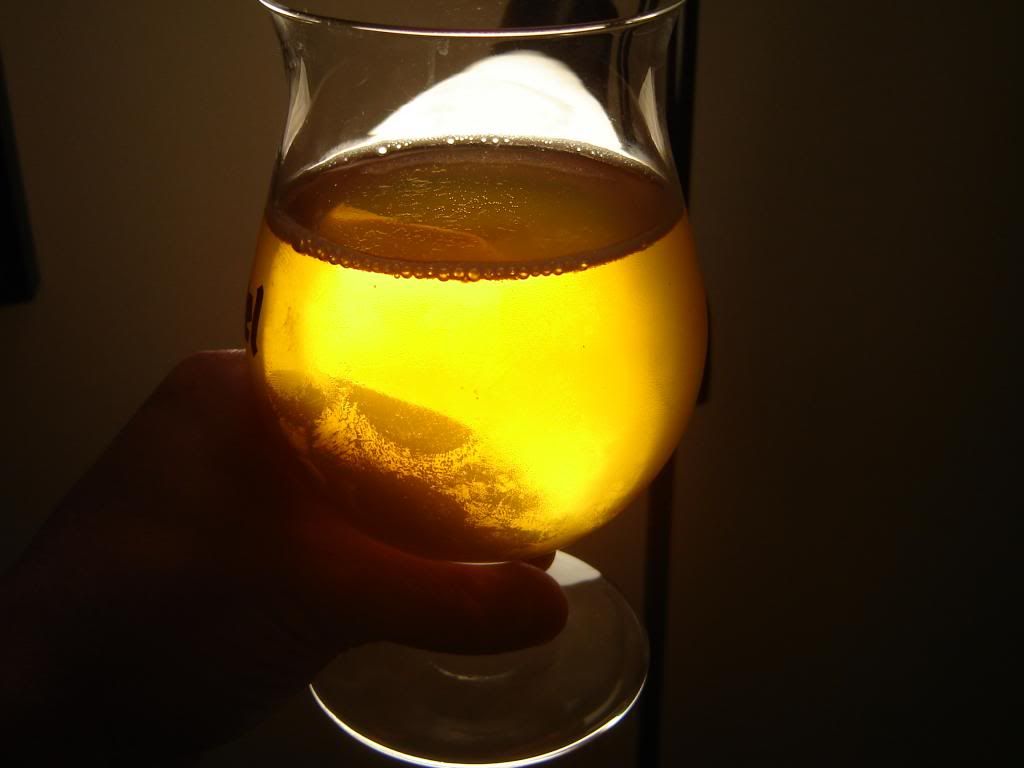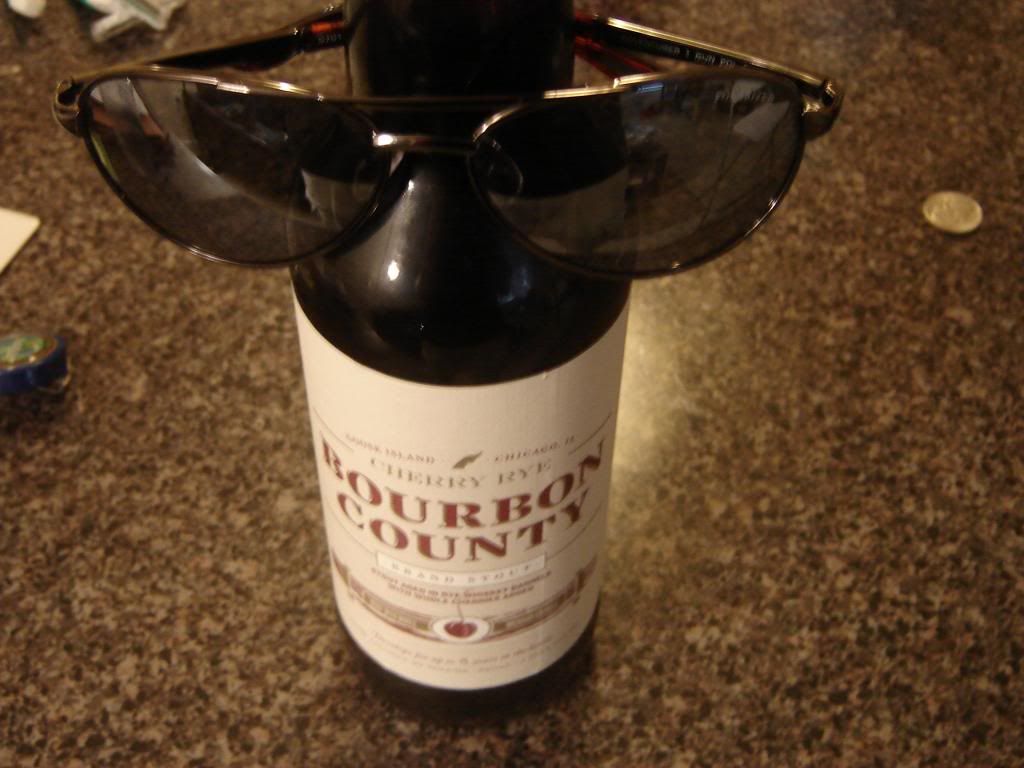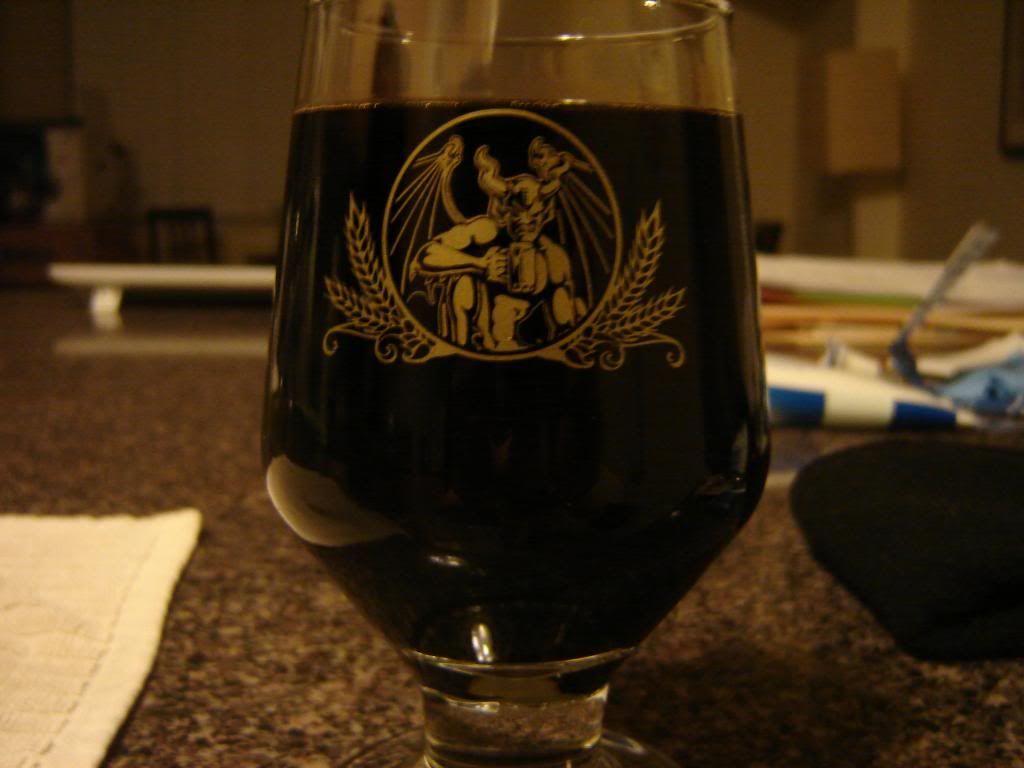Every year for about the last 12 years, Stone Brewing
Company out of San Diego has released a barleywine known as Old Guardian, a play
on their w e i r d o b s e s s i o n with gargoyles (yes, each of those is a different link).
They change the recipe for every release, so it isn’t the same beer each
year, but it generally exemplifies Stone’s approach to brewing: atypically dry
for the style, brazenly hoppy/bitter, and gleefully unsubtle.
Starting in 2011, Stone began an “Odd Beers for Odd
Years” program where every odd-numbered year would see a strange variation of
Old Guardian and Imperial Russian Stout released alongside the “classic”
release. The 2011 “Odd” Old Guardian was
called Old Guardian BELGO, a version made with Belgian yeast; this year’s is
Oak-Smoked Old Guardian, a version brewed with oak-smoked wheat malt.
I don’t have my fresh review of Old Guardian BELGO on
hand, but since it is a barleywine I bought two bottles to age and decided to
crack one around the time of this year’s release. Here’s how the two break down.
Old Guardian
BELGO
When this beer was fresh, it was intriguing and a bit
tasty, but also a bit of a mess, and thus deeply polarizing. It is made with the same yeast they use for
Cali-Belgique. Since Cali-Belgique does
not taste even remotely Belgian in my opinion, I wasn’t expecting much. What I got was a beer that was surprisingly Belgian
(lots of fruity flavors that can only come from yeast esters), a little hot
(too much booze), and way too hoppy.
It was all over the place, and the different flavors clashed too much
(that year’s Classic release was also a boozy-bitter train wreck). A lot of people thought it was way boozier
than I did, and others thought it tasted like Band Aids. I figured with age, the hop and alcohol
flavors would smooth out, which is usually what happens when you age beer.
The beer is just as intriguing now as it was fresh. Unfortunately, age has not been particularly
kind to it.
 |
| Looks like juicy hell |
Old Guardian BELGO has an orange-red hue that looks a bit
like some sort of juice, like orange juice or a lighter carrot juice
maybe. It is opaque and very
cloudy. The carbonation is slow, steady
and seemingly ceaseless; the bubbles kept on flowing for 30 minutes. The 12% alcohol kept the beer from accruing
any foam, however.
I can’t really begin to describe how incredibly odd this
smells now, especially compared to fresh.
It suggests a kitchen-sink approach to brewing that Stone is pretty
well-known for, but I don’t think most of the disparate aromas were
intentional. The first thing I noted was
a tanginess I normally associate with Flemish red ales….if Flemish red ales
weren’t sour. Wait, what? Yes, there is a note
of Flemish red in my barleywine. Also
honey. Also apples. Also indistinct spices, like yeast
phenols. Also…am I smelling hops in a
beer that’s two years old? I might
be. A very bright-smelling
barleywine. Fascinating.
The bottled-kaleidoscope aspect is even more bizarre when
I taste it. The flavors start with honey
and bubblegum, which is automatically and simultaneously pleasing and
confusing. The honey is probably from
the malt, that can happen in a barleywine, though it’s rare. The bubblegum? No idea.
Can happen in German weissbier yeast, very rare in Belgian yeast. I’ll take it though. Apples and pears covered in simple syrup,
kind of like Hoppin’ Frog Sweet Evil.
Then BAM---hops. Hops. HOPS! How can there be hops in a two-year-old
beer? That’s the first thing that’s
supposed to go. Grapefruit rind and
intensely bitter, and to top off the bitter end the beer is still boozy
hot. Perhaps not as boozy as it was
fresh, but it seems to stand out more in my mind now than it did two years
ago. Very warming.
The texture is probably the worst part here. I’ll give Stone credit for trying to one-up
Sierra Nevada for hop retention, but if a beer is going to be this bitter it
should have some more malt sweetness. I
don’t recall if it seemed lacking fresh, but it seems lacking now. This is too dry for a barleywine, especially
one aged 24 months. The texture makes me
wonder how much of the honey flavor is from the malt and how much is from yeast
esters.
I think I pulled this bottle out too early; it needs at
least another year for the hops and ethanol to calm the hell down, assuming
that will ever happen. This is still an
interesting beer, but also still very rough around the edges and not what I
hoped it would be.
Old Guardian
Oak-Smoked
Okay, so this year they decided the Odd Year version
would actually have a different grain bill than the Classic release. According to Stone, the base beer is the same
as the Classic, but then they added oak-smoked wheat malt from Germany and
dialed down the hops a bit (about 70 IBU rather than 80). Generally, if an American brewer adds a lot
of wheat to a barleywine recipe they market it as a wheatwine, and since Stone
kept the barleywine label I assumed the smoke would be minimal (since the only
wheat they used is smoked wheat). Well,
it isn’t the smokiest beer I’ve had, but it has enough smoke that I can’t
imagine this has any less than 25% malted wheat. So I feel comfortable calling this a
wheatwine.
It doesn’t really look like BELGO. It is several shades darker
and crystal clear until you get to the bottom third of the bottle where all the
sediment is. The foam initially looks
promising, but soon tapers off to a thin mist despite a steady carbonation.
The aroma is….intriguing. I smell hoppy pine, and
actually quite spicy hops, similar to Chinook.
Pungent without smelling too bitter.
I see now on Stone’s website they did in fact use Chinook, which
figures. And smoke. It’s actually a bit more subtle than I would
expect from this company….more of a slight, sweet smoky flavor and less the
campfire/bacon aroma so many have.
The way it tastes though….no mistaking the smoke
here. Wow, this is actually quite a bit
better than the BELGO was fresh. It’s
also a lot better than the only other oak-smokedbeer I have had, though that was probably an off bottle (it tasted like
muddy sausage).
Specifics? There is
some campfire flavor here now, the smoldering ruin of logs safely assuaging my
smoke craving, with just a bit of bacon on the backend. That distinct pungency of Chinook hops
manages to cut through all the smoke though, giving it a spicy component…I’m
honestly reminded of spicy BBQ sauce a bit, if BBQ was also bitter. And yes, this is bitter. This is also a little acrid, somewhat
suggestive of an especially roasted stout.
It in no way resembles any barleywine or wheatwine I have ever had before,
as it still has that characteristic Stone dryness. This is not a thick gooey barleywine, and
perhaps the wheat helps there (I cannot really taste it). It is, however, totally awesome.
If you have never had a smoked beer before, you
should. Maybe you shouldn’t try this one
first, as it is a bit different than most, but any smoked beer is going to be
quite the experience. Even weaker ones
in the 4% to 6% alcohol range can have flavors as intense as a 15% beer; it
only takes a modest addition of smoked malt to beat you over the head with
campfire, ash, and bacon.
If I had to summarize this beer’s flavor, I would say it
tastes like a hoppy rauchbier with chipotle peppers added. It tastes hoppy because…because Stone made
it. It tastes a bit like peppers because
one of the hops used was Chinook. And it
tastes like a rauchbier because of the smoked malt.
The Verdict?




